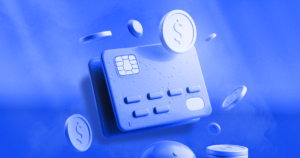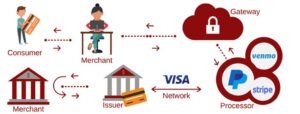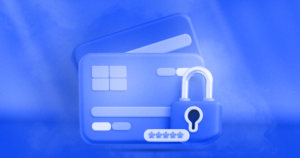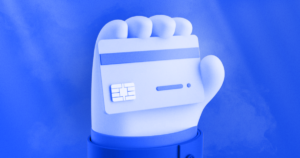Credit cards have become a valuable financial tool to help you make urgent payments and build your credit score. Roughly 2.8 billion people have credit cards, which make up 35% of the world’s population. Total credit card transaction value exceeded $3.5 trillion in 2024. Credit cards serve as a gateway to financial freedom, which can be quite deceptive sometimes. Getting access to the revolving line of credit can work well if used wisely. This is why understanding the mechanism behind the piece of plastic is required to manage your finances with confidence. So, how do credit cards work? Read this article to get a detailed answer.

A credit card is a financial settlement between the cardholder and the issuer. It allows you to borrow money up to a certain limit and then make a full reimbursement over time. Most credit companies check your financial rating to understand your ability to make full repayment. They use this knowledge to decide about lending money. The key players in a credit card transaction include:
What are credit cards used for? They are used for online shopping, travel bookings, insurance bills, and other purposes. They offer financial flexibility, allowing you to collect funds and pay them back later.
You can compare using a credit card to taking out a personal loan, which allows you to receive a specific sum once and repay it within a set timeframe. Understanding how this financial tool works may help you use it responsibly, earn potential rewards, and avoid getting trapped in debt.
Making a purchase with a credit card takes several seconds. The process may look simple, but it involves a huge number of events. Here is what the transaction looks like:

Once the initial transaction is settled, the banks and networks still have things to do. Credit card processing fees must be covered by the service provider. Once done, the retrieved funds make their way to the merchant’s balance.
What does a credit card do? Generally, it allows users to borrow money from a bank or issuer to make purchases, pay bills, or withdraw cash. Here are different types of credit cards, each coming with approved features:

When submitting your credit card application, the issuer makes a hard inquiry into your financial record. This may reduce your score by several points, which will remain on your credit report for two years. How a credit card works? It reflects a person’s creditworthiness, which helps build a strong credit score. Making timely payments is the key condition for having a credit score. Payment history is the most crucial factor because it makes up 35% of the score.
Credit utilization also has a direct impact on the score. Keeping the utilization level below 30% is required for a positive effect. When you become more confident using a credit card, ensure to keep your credit utilization as low as possible.
Having extensive experience with credit can also impact your score. The age of your oldest, newest, and average accounts could be scoring factors as well. Opening a credit card will decrease the average age of your accounts, which might hurt your financial rating. Meanwhile, keeping the account open can be helpful in the long run.
In the context of B2B transactions, PayAdmit’s Payment Bridge supports credit card processing in a way that aligns with credit score logic and creditworthiness evaluation. The product enables companies to manage transactions from different platforms without direct integration, maintaining the integrity of credit data and payment history. This functionality helps businesses ensure accurate reporting and risk management while offering end users a credit experience that meets financial standards and contributes positively to credit score formation.
Many individuals use a debit card before they get their first credit card. They both belong to a payment network and can be used for making purchases. Despite all the similarities, they actually have different functionality. A credit card allows you to borrow money, with the intention of paying it back within a certain timeframe. With a debit card, you can only use the funds you’ve already transferred to the checking account linked to the card. Check the detailed comparison of both products in the table below.
| Features | Credit cards | Debit cards |
| Source of funds | Borrowed from the issuer | Taken directly from the bank account |
| Spending limit | Set by issuer (credit limit) | Limited to account balance |
| Interest and fees | Interest on unpaid balances; may have monthly and annual fees | No interest;
minimal or no fees |
| Credit score impact | Helps build and/or improve financial score | No impact on the financial score |
| Fraud protection | Stronger protection and chargeback options | Limited fraud protection |
| Rewards and benefits | Offers cashback, points, or travel rewards | No special rewards |
| Best use cases | Building credit, earning rewards (cashback, points, travel miles), secure online purchases, travel bookings | Everyday expenses, budget savings, avoiding debt |
To manage credit cards effectively, you should develop good spending habits. To achieve the desired level of efficiency, you may require some guidance. Check the main scenarios of using your card.
Canceling a credit card issued by Discovery is a quick and simple process. It needs you to follow the right steps to avoid a negative impact on your credit score.
Now that you have the answer to your question, “how does a credit card work”, you should be ready to get your transaction declined. A decline code is a notification that pops up on the screen when a transaction does not go through. The decline code makes it easier for the issuer to explain the reason behind the decline to the cardholder. Here are the most common reasons for a decline code:
Understanding the meaning of the received code is critical for solving the underlying problem. You may need to contact your credit card company, provide the recent payment details, or take a different card. Make sure to manage your card effectively and keep track of your finances.
Some retailers don’t support credit cards. A cash advance allows you to withdraw cash from your credit card so you can make a payment offline. Here are a few ways of doing it:
Get a cash advance with any Discover Card from partnering banks, ATMs, and credit unions. You can also deposit cash from your card directly into your checking account if you want to request checks online.

Now that you know “how does the credit card work”, your business can use this tool to accept online payments securely through payment gateways (e.g., Stripe, PayPal), merchant accounts, or processors (e.g., Square). These cards offer fraud protection, fast transactions, and global reach, contributing to customer satisfaction and higher sales.
Professional online businesses use different credit card processing methods, including gateways (e.g., PayPal, Stripe), corporate accounts, processors (e.g., Square), hosted checkout pages, and API integrations for smooth transactions. Each method offers different security, fees, and customization options.
A merchant account is a unique bank account that allows businesses to receive payments via credit cards. It is required for processing transactions between consumers and the business’s bank. It also ensures swift transactions and helps manage corporate funds efficiently.
To guarantee secure online credit card payments, use secure gateways (e.g., Stripe, PayPal), comply with PCI-DSS norms, enable 2FA, and install fraud detection software on your device. In addition, inform consumers about safe online practices.
As a merchant, you may pay various fees for accepting credit cards, including transaction fees (usually a percentage per sale), monthly service fees, chargeback fees, and setup fees. Payment processors and merchant accounts may also charge additional fees based on transaction volume, risk, or integration conditions. You can use a calculator to estimate all the charges.